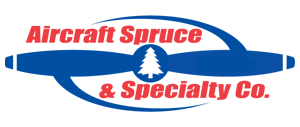FREE SHIPPING ON ORDERS OVER $350 (SOME EXCLUSIONS APPLY) | 877-4-SPRUCE
B-247 United Model
$225.95/Each
Part# 13-10873
MFR Model# KB247UATE
MFR Model# KB247UATE
Overview
|
The revolutionary Boeing 247, developed in 1933, was an all-metal, twin engine airplane and the first modern passenger airliner. It had a gyro panel for instrument flying, an autopilot, pneumatically operated de-icing equipment, a variable-pitch propeller and retractable landing gear. It also featured thick upholstered chairs, an insulated cabin, a lavatory and individual overhead lighting. The phenomenon of the Model 247 caught the attention of Americas young airline companies. When its commitment to United prevented Boeing from filling orders fast enough, Transcontinental and Western Air (TWA) turned to Douglas. Douglas offered to build something similar to the Boeing 247, only faster and larger. TWA quickly accepted the proposal. The Douglas DC-1 which was eventually refined as the legendary DC-3, immediately attracted new customers. Thus, making the 247 obsolete less than a year after its first flight. Seventy-five 247s were built. Boeing Air Transport flew 60 247s. United Aircraft Corporation flew 10 and the rest went to Deutsche Lufthansa and a private owner in China. The Boeing 247s remained in airline service until World War II, when several were converted into C-73 transports and trainers. Some were still flying along with the Douglas DC-2 that supplanted it, the Model 247 ushered in the age of speed, reliability, safety and comfort in air travel. |
WARNING: Cancer and Reproductive Harm - www.P65Warnings.ca.gov. |
Q&A
Please note, Aircraft Spruce's personnel are not certified aircraft mechanics and can only provide general support and ideas, which should not be relied upon or implemented in lieu of consulting an A&P or other qualified technician. Aircraft Spruce assumes no responsibility or liability for any issue or problem which may arise from any repair, modification or other work done from this knowledge base. Any product eligibility information provided here is based on general application guides and we recommend always referring to your specific aircraft parts manual, the parts manufacturer or consulting with a qualified mechanic.








 FREE Shipping
FREE Shipping